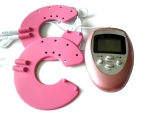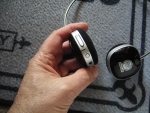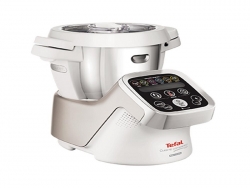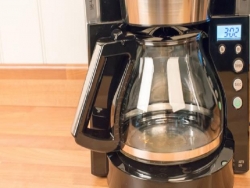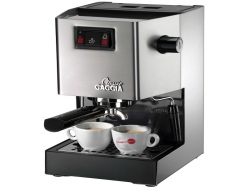US READY - The American's No1 Manufacturer of Power batteries
4 Big Benefits of power Batteries
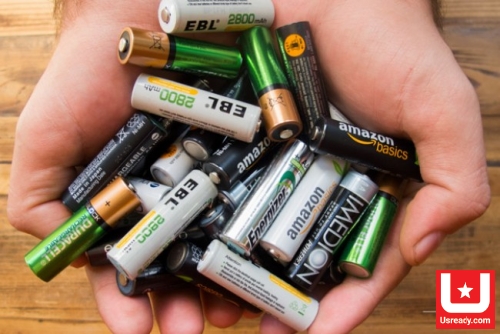
4 Big Benefits of power Batteries
I’m referring to the lead acid battery, the energy storage technology used in UPS systems, which remains much the same now as it did decades ago. But as the industry develops new types of batteries for devices ranging from smart phones to electric automobiles, we can clearly see
the day when UPSs take advantage of these developments.
It’s coming at a good time, because customers are facing some difficult challenges with respect to UPSs, whether they’re for data centers, critical buildings, industrial processes or critical infrastructure. These challenges are driving the need for specific UPS requirements, including:
- Reduced UPS footprint and weight to allow for a more effective, flexible use of space
- Reduced cooling capacity
- Increased energy storage availability and ability to predict UPS failures
- Extended UPS life and reduced maintenance overhead
Lithium ion (Li-ion) batteries on Wikipedia hold great promise to address all of these challenges and requirements. In this post I’ll explain the four main reasons why.
First, Li-ion batteries provide multiple times the energy and power density as compared to valve-regulated lead-acid batteries (VRLA), which are the most common type currently used in UPS systems. As a result, UPSs built with Li-ion batteries take up only about one-third the space or less of a VRLA-based solution that delivers the same power.
That smaller footprint translates to reduced cooling requirements as well as about a two-thirds reduction in weight, at least. That means customers have more flexibility in terms of where they install the systems and can often avoid costly building modifications.
Li-ion batteries can also withstand a wider temperature range than VRLA batteries. The rule of thumb is that VRLA battery life is reduced by half for every 10°C (18°F) increase above 25°C (77° F) ambient temperature. Li-ion batteries are far less sensitive to temperature fluctuations and can accept spikes in temperature with almost no effect on battery life. This again allows customers to reduce cooling capacity as well as the size of the room that houses the UPS.
A third benefit is that Li-ion batteries always come with sophisticated battery monitoring systems (BMS) that provide a clear picture of battery runtime and health. It’s essentially the same technology that enables you to easily see how much battery life is left in your smart phone.
In contrast, VRLA batteries rely on chemistry that makes it hard to accurately predict when they’re going to fail. Think about your car battery: it may crank perfectly fine one day but the next it’s a little chilly and the battery fails, without warning. That won’t happen with Li-ion batteries.
Which leads to the final benefit of Li-ion batteries for UPSs: increased life expectancy. In theory, VRLA batteries used in UPS systems have a life expectancy of 10 years. But due to the constraints around being able to determine their actual health and life expectancy, in practice most customers replace them after 5 or 6 years.
In contrast, Li-ion batteries of the sort best suited for UPSs are expected to last for more than 10 years, reducing the burden and cost of battery replacements, as well as the risks of down time or load interruption during maintenance.
Of course no new technology comes without certain implementation challenges and Li-ion batteries are no different. First is the need to find the type of Li-ion battery that’s best suited for UPS applications. UPS requirements are quite different from those for, say, an electric car battery. Car batteries are designed to store lots of energy so the car can travel as many miles as possible before recharging. With UPS batteries, the concern is not length of run time so much as the need to deliver a lot of power quickly for a short period of time, usually just a few minutes until the backup generators kick in.
For a UPS we’re also not really interested in a battery that can cycle on and off thousands of times, because a UPS kicks in only occasionally. Rather, we need it to be highly reliable and safe, with a long life expectancy.
Secondly, we need a battery that can deliver a lower total cost of ownership (TCO) as compared to VRLA batteries. Li-ion batteries are already competitive on that front. They may cost more up front, but will last about twice as long as VRLA batteries. Li-ion batteries also have a far smaller footprint, which drives down both space and cooling requirements – delivering further cost savings.
I expect the TCO story to get even better in coming months and years, since Li-ion technology is still quite new with respect to UPSs. Prices should fall at a much faster rate than that for the mature VLRA technology.
I’d love to hear your thoughts on Li-ion technology and whether you think it could help address your own UPS challenges and requirements. Please let me know what you think using the comments below.
How to Buy Rechargeable Batteries
Rechargeable batteries have become popular for their efficiency. Instead of buying new batteries every time the power runs out in the electronic item you are using your batteries for, you simply need to charge your batteries back to full strength. It makes sense for most people economically and environmentally, and it is also more convenient. There are a variety of rechargeable batteries on the market, and they can be purchased from most major retailers online and in stores. Buy rechargeable batteries by determining what kind of battery you need, and comparing its power, performance, memory and safety.
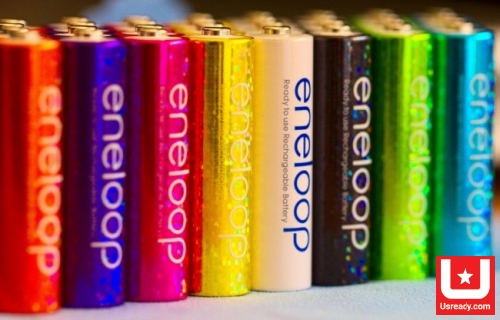
How to Buy Rechargeable Batteries
- Find rechargeable batteries that are compatible to the device you have.
The type of batteries discussed here will be either AA size or those that fall under the category of lithium-ion
Familiar sizes, such as AA, AAA, C and D can be found at almost any store imaginable. Concerning cost, rechargeable batteries are a wonderful investment. Rechargeable AA or AAA batteries are known as Nickel Metal Hydride (NiMH).Generally, C and D size are not available in this form.
- Adjust your budget
You will pay more for rechargeable batteries than you do for disposable batteries but they will pay for themselves quite quickly.
- Choose between nickel and lithium batteries.
Most rechargeable batteries are made from nickel cadmium (NiCd) or lithium cadmium (LiCd).
Watch for the memory effect with your NiCd batteries. The battery life decreases when you recharge the battery before it is fully depleted. So, if you buy a nickel rechargeable battery, make sure you use up all the battery life before you charge it. The aforementioned NiMH battery (especially the new ones) have no memory and can be charged anytime. These are what you'll generally see in most stores ... when rechargeable batteries are sold.
Choose a lithium-ion (Li-ion) battery if you want to be able to charge it at any time. These types of batteries do not have a memory effect, and they hold their charge for months at a time regardless of when you charge them.
- Compare battery life
When you buy a rechargeable battery, the milliamp hour rating (mAh) is what to look for as far as knowing the amount of energy a battery will hold. The higher the rating, the longer it will power a device before needing to be charged again.
Consider the device you are using the battery for. A high energy item, such as a digital camera, or an LED flashlight will use up the battery quicker than a remote control will.
- Buy a charger when you buy your batteries
A battery charger is necessary to recharge your batteries over and over again.
Look for a charger that is reliable, and utilizes a CC/CV (constant current, constant voltage) algorithm. Some chargers will accept many different battery sizes, and be able to charge both NiMH and lithium batteries at the same time. Most chargers can be used through a wall plug, USB port and even a car charging port.
- Consider the environmental impact of your battery choice
All rechargeable batteries are better than single use batteries for the earth. NiMH batteries are even greener than cadmium batteries.
- Check out consumer reviews when considering batteries and battery chargers
But don't be fooled by extremely inexpensive lithium batteries! Even if some consumers rate them well, they are cheaply made and can be dangerous sometimes!
- Look for safety features
Buying "protected" batteries is your safest bet. Make sure you buy products that are safe and not the subject of government or industry recalls.
- Buy NiMH rechargeable batteries anywhere you would normally buy batteries
Department stores such as Target, Sears and Walmart, hardware and electronic stores such as Home Depot, Lowes and Radio Shack will all sell them. Only online retailers will sell rechargeable lithium-ion batteries.
Buy online from major sites such as Amazon, eBay and Overstock or on sites that specialize in rechargeable batteries and chargers. Just be aware that Amazon and eBay are also where you could be fooled into buying extremely cheap batteries that will NOT last, and be potentially unsafe.
>> See more: US Ready
Safety Concerns with Rechargeable Batteries
Learn what causes Li-ion to fail and what to do in case of fire.

Safety Concerns with Rechargeable Batteries
Safety of lithium-based batteries has attracted much media and legal attention. Any energy storage device carries a risk, as demonstrated in the 1800s when steam engines exploded and people got hurt. Carrying highly flammable gasoline in cars was a hot topic in the early 1900s. All batteries carry a safety risk, and battery makers are obligated to meet safety requirements; less reputable firms are knowns to make shortcuts and it’s “buyer beware!”
Lithium-ion is safe but with millions of consumers using batteries, failures are bound to happen. In 2006, a one-in-200,000 breakdown triggered a recall of almost six million lithium-ion packs. Sony, the maker of the lithium-ion cells in question, points out that on rare occasion microscopic metal particles may come into contact with other parts of the battery cell, leading to a short circuit within the cell.
Battery manufacturers strive to minimize the presence of such particles; however, complex assembly techniques make the elimination of all metallic dust a challenge. Cells with ultra-thin separators of 24µm or less (24-thousandth of an mm) are more susceptible to impurities than the older designs with lower Ah ratings. Whereas the 1,350mAh cell in the 18650 package could tolerate a nail penetration test, the high-density 3,400mAh can ignite when performing the same test. New safety standards direct how batteries are used, and the UL1642 Underwriters Laboratories (UL) test no longer mandates nail penetration for safety acceptance of lithium-based batteries.
Li-ion using conventional metal oxides is nearing its theoretical limit on specific energy. Rather than optimizing capacity, battery makers are improving manufacturing methods to enhance safety and increase calendar life. The real problem lies when on rare occasions an electrical short develops inside the cell. The external protection peripherals are ineffective to stop a thermal runaway once in progress. The batteries recalled in 2006 had passed the UL safety requirements — yet they failed under normal use with appropriate protection circuits.
There are two basic types of battery failures. One occurs at a predictable interval-per-million and is connected with a design flaw involving the electrode, separator, electrolyte or processes. These defects often involve a recall to correct a discovered flaw. The more difficult failures are random events that do not point to a design flaw. It may be a stress event like charging at sub-freezing temperature, vibration, or a fluke incident that is comparable to being hit by a meteor.
Let’s examine the inner workings of the cell more closely. A mild short will only cause elevated self-discharge and the heat buildup is minimal because the discharging power is very low. If enough microscopic metallic particles converge on one spot, a sizable current begins to flow between the electrodes of the cell, and the spot heats up and weakens. As a small water leak in a faulty hydro dam can develop into a torrent and take a structure down, so too can heat buildup damages the insulation layer in a cell, causing an electrical short. The temperature can quickly reach 500C (932F), at which point the cell catches fire or it explodes. This thermal runaway that occurs is known as “venting with flame.” “Rapid disassembly” is the preferred term by the battery industry.
Uneven separators can also trigger cell failure. Poor conductivity due to dry areas increases the resistance, which can generate local heat spots that weaken the integrity of the separator. Heat is always an enemy of the battery.
What to do when a battery overheats
If a Li-ion battery overheats, hisses or bulges, immediately move the device away from flammable materials and place it on a non-combustible surface. If at all possible, remove the battery and put it outdoors to burn out.
A small Li-ion fire can be handled like any other combustible fire. For best result use a foam extinguisher, CO2, ABC dry chemical, powdered graphite, copper powder or soda (sodium carbonate). If the fire occurs in an airplane cabin, the FAA instructs flight attendants to use water or soda pop. Water-based products are most readily available and are appropriate since Li-ion contains very little lithium metal that reacts with water. Water also cools the adjacent area and prevents the fire from spreading. Research laboratories and factories also use water to extinguish Li-ion battery fires. Halon is also used as fire suppressant, but this agent may not be sufficient to extinguish a large Li-ion fire in the cargo bay of an aircraft.
A large Li-ion fire, such as in an EV, may need to burn out as water is ineffective. Water with copper material can be used, but this may not be available and is costly for fire halls.
When encountering a fire with a lithium-metal battery, only use a Class D fire extinguisher. Lithium-metal contains plenty of lithium that reacts with water and makes the fire worse. As the number of EVs grows, so must the methods to extinguish such fires.
CAUTION: Do not use a Class D fire extinguisher to put out other types of fires; make certain regular extinguishers are also available. With all battery fires, allow ample ventilation while the battery burns itself out.
During a thermal runaway, the high heat of the failing cell inside a battery pack may propagate to the next cells, causing them to become thermally unstable also. A chain reaction can occur in which each cell disintegrates on its own timetable. A pack can thus be destroyed in a few seconds or over several hours as each cell is being consumed. To increase safety, packs should include dividers to protect the failing cell from spreading to the neighboring one.
The gas released by a venting Li-ion cell is mainly carbon dioxide (CO2). Other gases that form through heating are vaporized electrolyte consisting of ethylene and/or propylene. Burning gases also include combustion products of organic solvents.
While lithium-based batteries are heavily studied for safety, nickel- and lead-based batteries also cause fires and are being recalled. The reasons are faulty separators resulting from aging, rough handling, excessive vibration and high-temperature. Lithium-ion batteries have become very safe and heat-related failures occur rarely when used correctly.
Simple Guidelines for Using Lithium-ion Batteries
- Lithium-ion batteries contain little lithium metal and in case of a fire they can be dowsed with water. Only lithium-metal batteries require a Class D fire extinguisher.
- Water interacts with lithium. If a Class D extinguisher is not available to douse a lithium-metal fire, only pour water to prevent the fire from spreading.
- For best results dowsing a Li-ion fire, use a foam extinguisher, CO2, ABC dry chemical, powdered graphite, copper powder or soda (sodium carbonate) as you would extinguish other combustible fires. Reserve the Class D extinguishers for lithium-metal fires only.
- If the fire of a burning lithium-ion battery cannot be extinguished, allow the pack to burn in a controlled and safe way
- Be aware of cell propagation as each cell might be consumed on its own time table when hot. Place a seemingly burned-out pack outside for a time.






